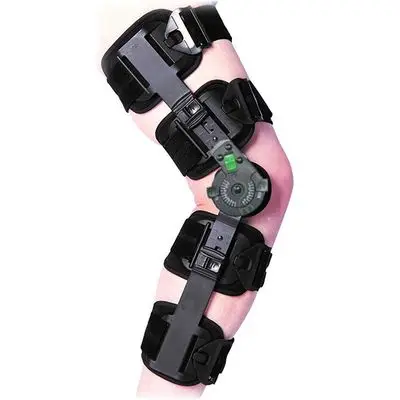Knee Braces
Introduction
Knee braces are essential tools for individuals experiencing knee injuries, chronic pain, or those recovering from surgery. Designed to provide support, stability, and protection, knee braces can significantly enhance mobility and quality of life. Whether you’re an athlete dealing with a sports injury or someone managing arthritis, the right knee brace can help. In this article, we explore the different types of knee braces, their uses, benefits, and how to choose the best one for your needs.
Types of Knee Braces
Knee braces come in various forms, each tailored to specific conditions and levels of support. Here are the primary types:
Prophylactic Braces
- These braces are designed to prevent knee injuries during physical activities, particularly contact sports like football or rugby.
- They offer moderate support and protection, reducing the risk of ligament injuries by stabilizing the knee.
Functional Braces
- Often used after a knee injury (e.g., ACL tears) or surgery, functional braces provide stability to weakened or injured knee joints.
- These braces allow for a range of movement while preventing excessive motion that could further damage the knee.
- Commonly used during rehabilitation, functional braces are designed to support the knee while gradually restoring strength and mobility.
Rehabilitative Braces
- Rehabilitative braces are typically prescribed after surgery or severe injury to restrict knee movement and allow tissues to heal properly.
- These braces often feature adjustable hinges, which enable controlled movement and gradual increases in range of motion as recovery progresses.
Unloader or Offloader Braces
- These braces are specifically designed for individuals with knee osteoarthritis.
- They work by shifting weight from the damaged side of the knee joint to the healthier side, reducing pain and improving function during daily activities.
- Unloader braces are particularly beneficial for those seeking non-surgical solutions for arthritis.
Compression Sleeves
- Compression sleeves provide mild support and warmth to the knee. They are ideal for individuals with mild pain or inflammation.
- While they don’t offer as much stability as rigid braces, they are lightweight and comfortable for daily use.
Benefits of Knee Braces
Knee braces provide a range of benefits that can significantly improve an individual’s mobility and comfort. These include:
- Pain Relief: Knee braces help manage pain by providing support and reducing the stress on the knee joint. This is particularly beneficial for individuals with arthritis or ligament injuries.
- Stability: Braces stabilize the knee, reducing the risk of further injury by limiting unwanted movements.
- Injury Prevention: For athletes, wearing a knee brace during physical activity can prevent injuries by protecting ligaments and minimizing excessive movement.
- Post-Surgical Support: After knee surgery, such as ACL reconstruction, knee braces help immobilize the joint and support proper healing.
- Improved Mobility: Knee braces allow individuals to perform daily activities with greater ease and confidence, enhancing overall mobility.
Choosing the Right Knee Brace
Selecting the right knee brace is crucial for its effectiveness. Here are some factors to consider:
Condition and Purpose
- Understand your knee condition: Are you recovering from surgery, dealing with arthritis, or aiming to prevent an injury? Each condition requires a different type of brace.
- Consult with a healthcare professional to determine which type of brace is best suited to your needs.
Level of Support
- Determine the level of support you require. Functional and rehabilitative braces offer higher levels of stability, while compression sleeves provide mild support.
- Athletes may benefit from prophylactic braces that offer flexibility and protection without restricting movement.
Material and Comfort
- Knee braces come in various materials such as neoprene, which provides comfort and warmth, and more rigid materials like plastic for maximum support.
- Look for breathable and lightweight materials if you plan to wear the brace for extended periods.
Adjustability and Fit
- A proper fit is essential for the brace to work effectively. Many knee braces are adjustable, allowing you to customize the fit.
- Ensure the brace isn’t too tight, as this could restrict circulation, or too loose, as it may not provide adequate support.
Proper Use and Maintenance of Knee Braces
For knee braces to be effective, they must be used correctly and well-maintained:
Follow Medical Guidance
- Always follow your doctor’s instructions regarding how long and when to wear the knee brace. Overuse or improper use can lead to muscle weakness or decreased mobility.
- If prescribed post-surgery, the brace may need to be worn continuously for a specified period, and you may gradually reduce its use as recovery progresses.
Clean Regularly
- Keeping the brace clean is important, especially if worn daily. Most knee braces can be hand-washed with mild soap and air-dried.
- Avoid using harsh chemicals, as they may damage the materials.
Inspect for Wear and Tear
- Regularly check your knee brace for signs of wear, such as loose straps or damaged hinges. Replacing worn parts or the brace itself can help maintain its effectiveness.
Combine with Exercise
- Using a knee brace in combination with physical therapy exercises can help strengthen the muscles around the knee, improving overall stability and function.
- Your healthcare provider or physical therapist can recommend exercises that are safe and effective for your specific condition.
Conclusion
Knee braces are invaluable tools for those recovering from injury, managing chronic knee pain, or seeking to prevent knee injuries during physical activities. By providing stability, reducing pain, and supporting mobility, knee braces enhance the quality of life for many individuals. Whether you need a brace for post-surgery support, arthritis management, or athletic protection, understanding the different types of knee braces and selecting the right one for your needs is crucial. Always consult a healthcare professional to ensure you make the best choice for your knee health.
Ergoactive Injury Boot - Off Load Pressure
Combined with its dynamic, three-module shock absorption system (heel-flat-toe), the SHOEBAUM SHORT also offers a lateral sliding, gait-mimicking insole. Together, with an adjustable ROM hinge, pneumatic inner cushion liner, and compact design, the SHOEBAUM SHORT is the most comfortable and advanced injury boot/air CAM walker available.
HIGHLIGHTS

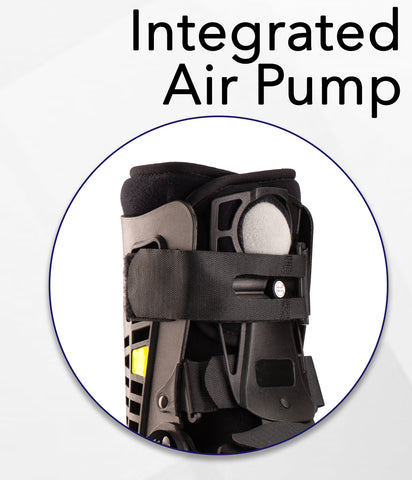



SPECIFICATIONS
USER SHOE SIZE RANGE: Women: 7.5 - 11.5 Men: 8 - 12.5
UNIT WEIGHT: 2.90 LBS
OVERALL HEIGHT: 12"
OVERALL WIDTH: 5.50"
OVERALL DEPTH: 12"
FLOOR TO INSOLE HEIGHT: 3"
RANGE OF MOTION (ROM): WOMEN: 90º - 100º MEN: 105º - 115º
*MATERIALS ARE LATEX FREE
WARRANTY
Your SHOEBAUM SHORT boot is warranted against defects in material and/or workmanship for one (1) year. This warranty does not extend to accessories and non-durable components such as soles, insoles, soft goods, or straps which are subject to normal wear and replacement. Non-durable or consumable components are warranted against manufacturer defects for 30 days.
RETURN POLICY
This product is non-returnable. It is considered a single-use patient item. Refer to Ergoactives’ Return Policy for further details.
INTERNATIONAL SHIPPING
CUSTOMS
You, the customer, are responsible for all taxes and duties (including VAT) imposed by your country of residence.
Ergoactives is not responsible for any packages held by international customs agencies and it is not the responsibility of Ergoactives to make the customer aware of these agencies and their actions. Please check with your country's customs office to determine their procedures and any potential charges.
Your package may arrive at your local post office or delivery center and be held until pickup and payment is taken care of.
If you neglect to pick up your package and it is returned to us, we will not refund the charge for original shipping.
Should Ergoactives mistakenly be invoiced directly for any duties or fees from the shipping company after delivery, we will email an invoice for the balance due. This will need to paid immediately.
As with domestic shipping, if a package can't be delivered due to an error entering your shipping address, Ergoactives is not responsible for any additional fees that may incur in order to reroute or reship the package.
TRACKING
If you have a USPS package marked as delivered but haven't received it, please contact your local mail facility.
You will have to pay taxes and duties in your own country if applicable. This is something we have no control over it and by purchasing an Ergoactives product, you acknowledge that you are aware of this and accept it as your financial responsibility.

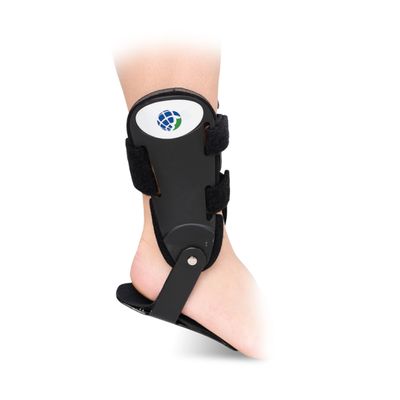
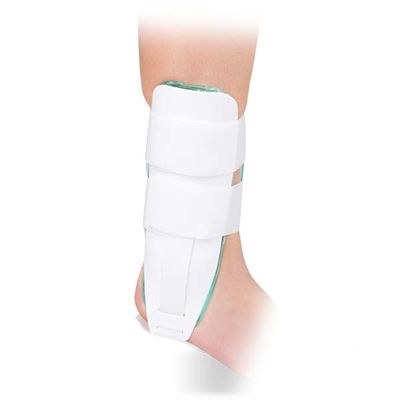
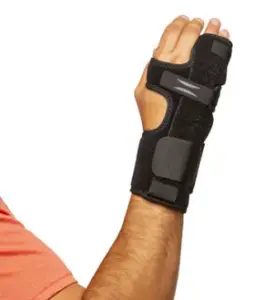
Knuckle Orthosis: Purpose, Benefits, and Applications
Knuckle Orthosis Knuckle Orthosis: Purpose, Benefits, and Applications A Knuckle Orthosis is a specialized medical device designed to provide stability, support, and protection to the metacarpophalangeal (MCP) joints—the knuckles of the hand. These orthotic devices are commonly used in the… Continue Reading…

Wrist and Hand Braces: Support, Relief, and Rehabilitation for Hand and Wrist Conditions
Wrist and Hand Braces Introduction Wrist and hand braces are essential tools for individuals managing pain, recovering from injuries, or dealing with chronic conditions such as carpal tunnel syndrome, arthritis, or tendonitis. These braces provide stability, compression, and support to… Continue Reading…

Orthopedic Shoulder Braces: Support for Shoulder Injuries and Chronic Conditions
Orthopedic Shoulder Braces Introduction Orthopedic shoulder braces are designed to provide support and stabilization for individuals recovering from shoulder injuries, managing chronic shoulder pain, or undergoing post-surgical rehabilitation. These braces help alleviate discomfort, protect the shoulder joint, and prevent further… Continue Reading…

